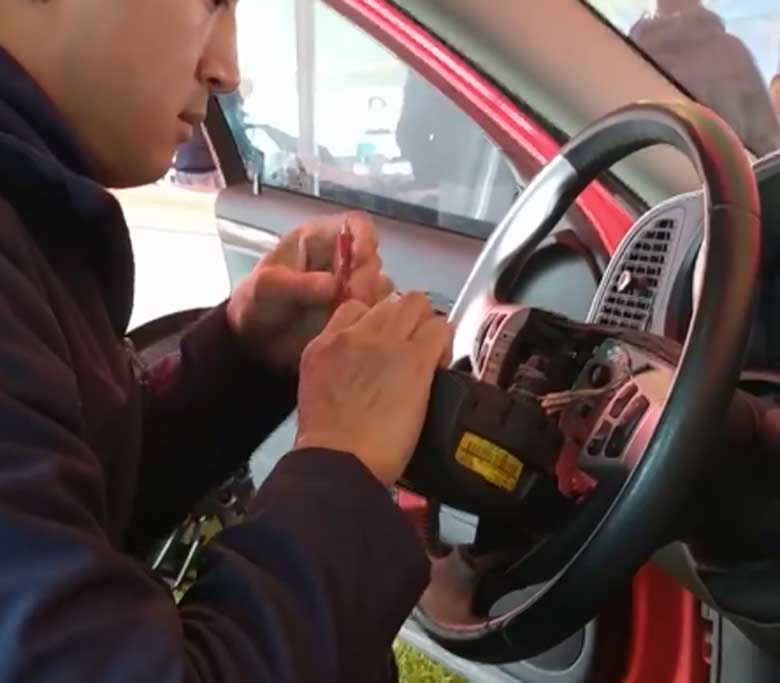The Takata airbag scandal has gripped the automotive industry for over two decades, raising serious safety concerns worldwide. This alarming issue has recently resurfaced in Sweden, where an estimated 150,000 vehicles, including numerous Saab cars, are believed to still be equipped with these hazardous Takata airbags. This article delves into the persistent nature of the Takata airbag recall, highlighting the potential risks faced by Saab vehicle owners and the importance of addressing this issue promptly.
Table of Contents
The Takata Airbag Crisis
Takata Corporation, a renowned Japanese manufacturer, began producing airbags in 1998 and, by 2014, held a significant 20% share of the global market. However, in 2013, the flaws in the airbags manufactured at their Mexican factory were discovered.
These airbags utilized ammonium nitrate to inflate during deployment, but the combination of moisture and high temperatures caused the ammonium nitrate to degrade over time. Consequently, the airbags would unpredictably explode, propelling sharp metal fragments into the vehicle cabin.
Tragic Consequences
The consequences of the Takata airbag defect have been catastrophic. At least 36 deaths have been attributed to these malfunctioning airbags, with over 400 injuries reported in the United States alone.
Vi Bilägare magazine research about Tarkata Airbags in Sweden
The Swedish automotive magazine, Vi Bilägare, has reported on the severity of the situation, emphasizing that it represents an unprecedented scandal in the history of the automotive industry. While no accidents related to Takata airbags have been recorded in Norway, it is believed that the risk of explosion is linked to high humidity and temperatures.

In light of the recent Vi Bilägare article addressing Takata airbags, concerns have been raised about the responsibility for Saab vehicles still in circulation on Swedish roads. This question has surfaced multiple times, both in Vi Bilägare articles and within the automotive community. However, the issue lies in the absence of an accountable brand representative. This response aims to shed light on the matter and provide relevant information regarding the Saab vehicles affected by Takata airbags.
The Lack of a Clear Responsible Party
Identifying a responsible party for the Saab vehicles equipped with Takata airbags has been a challenge. In May 2019, a workshop affiliated with the Saab Service Center responded to Vi Bilägare, stating that the same Takata airbags used in US vehicles were also present in Swedish vehicles. According to the information provided at the time, Takata airbags were found in Saab 9-3 models from 2006 to 2011, 9-5 models from 2006 to 2009, and the 9-2X model from 2005.
Transportstyrelsen’s Response
When contacted for clarification, the Swedish Transport Agency (Transportstyrelsen) provided the following response: “Transportstyrelsen has made every effort to obtain information about the Takata airbags in Saab vehicles. According to the information we have received, there are no risks associated with the European Saab vehicles, unlike the vehicles in the US. The European Saab vehicles have airbags manufactured and assembled in European factories equipped with humidity-controlled production facilities and higher quality control. Moreover, the issues reported are primarily linked to vehicles operated in high humidity and high-temperature regions.”
Input from Former Parts Supplier, Orio (now Hedin Parts and Logistics)
The former parts supplier for Saab vehicles, Orio, which is now known as Hedin Parts and Logistics, also commented on the situation. They claimed that Saab’s airbags were manufactured by Takata’s German factory, and no known problems were reported concerning the product’s quality or performance.
Recalls and Replacement Efforts
The Takata airbag recall has become the largest and most complex recall campaign in automotive history. Vehicle manufacturers worldwide have been grappling with the task of identifying and replacing defective airbags to ensure the safety of their customers.
In Norway, since 2014, a standing recall order has been in place for vehicles equipped with Takata airbags. Tore Lillemork, the technical director of the Norwegian Automotive Importers Association, has confirmed that several thousand vehicles in Norway are affected, significantly fewer compared to the estimated 150,000 affected vehicles in Sweden.
Saab Vehicles and the Recall
Saab vehicles, both those in active use and those owned by Saab, which is now bankrupt, have been particularly affected by the Takata airbag recall in Sweden. In January, it was revealed that 20 different car brands still had models requiring airbag replacements, with Saab and Toyota having a particularly high number of affected models. Given Saab’s historical popularity in Sweden and its larger vehicle fleet compared to Norway, the impact of the recall is significant.
A serious safety threat to Saab vehicle owners
The Takata airbag scandal continues to pose a serious safety threat to Saab vehicle owners, both in Sweden and worldwide. While the number of affected vehicles in Norway is relatively lower, it is essential to address this issue promptly to ensure the safety of all motorists.
Determining the responsible party for Saab vehicles with Takata airbags remains a complex issue. While the Saab Service Center and Orio have provided some insights, a clear and definitive response is still lacking. Transportstyrelsen has indicated that the risks associated with Takata airbags are primarily linked to vehicles in high humidity and high-temperature regions, suggesting that European Saab vehicles may not pose the same level of risk as their US counterparts.
However, to ensure the safety of Saab vehicle owners, it is crucial for automotive stakeholders to continue monitoring and addressing the situation proactively. Efforts should focus on comprehensive inspections, timely replacements, and effective communication channels to inform and protect Saab owners on Swedish roads.
Automotive manufacturers, importers, and regulatory authorities must remain vigilant in their efforts to identify and replace defective airbags, safeguarding the lives of drivers and passengers. By prioritizing safety and taking proactive measures, we can prevent further tragedies and mitigate the lasting impact of the Takata airbag crisis on the automotive industry.











